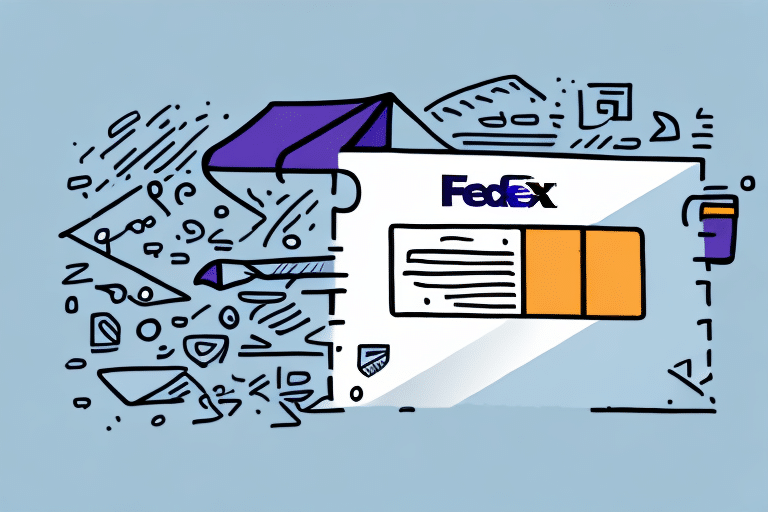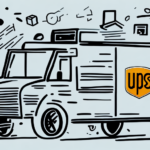How to Insure Your Package with FedEx
Shipping valuable items can be stressful, with concerns about potential loss, damage, or theft. Insuring your package with FedEx offers an added layer of protection, ensuring peace of mind and financial security. In this comprehensive guide, we’ll explore the importance of package insurance, FedEx’s insurance policies and coverage options, how to accurately calculate your shipment's value, best practices for packaging and labeling, the claims process, common pitfalls to avoid, and a comparison of FedEx’s insurance offerings with other carriers. Additionally, we’ll provide real-life examples of successful insurance claims to illustrate the benefits of choosing FedEx for your shipping needs.
Why Insuring Your Package with FedEx Is Important
Shipping involves various risks, including damage from handling, theft, or loss. Insuring your package with FedEx not only offers peace of mind but also provides financial protection against these risks.
Financial Protection and Peace of Mind
With FedEx insurance, you’re reimbursed up to the declared value of your package if it’s lost or damaged in transit. This financial safeguard allows you to recover the value of your shipment without the stress of handling replacements.
Eligibility and Restrictions
It’s essential to note that not all shipments qualify for insurance. Items such as hazardous materials, live animals, perishable goods, and items prohibited by law cannot be insured. Always review FedEx's list of prohibited items before insuring your package.
Expedited Claims Process
FedEx’s insurance options can streamline the claims process, allowing you to receive reimbursement without lengthy investigations. This efficiency is crucial when you need to swiftly replace lost or damaged items.
Understanding FedEx's Insurance Policies and Coverage Options
FedEx offers multiple insurance options to cater to different shipment values and needs:
Declared Value
Included with all FedEx shipments, Declared Value coverage protects packages up to $100 at no additional cost. If your shipment exceeds this amount, you can declare a higher value for an extra fee.
FedEx® Insurance
This option provides extended coverage up to $50,000 per package, suitable for high-value items. It includes additional protections and accommodates a broader range of goods.
Third-Party Insurance
Alternatively, you can opt for insurance from a third-party provider, which may offer more comprehensive coverage. However, note that FedEx is not liable for claims under third-party insurance policies.
Understanding Coverage Limits and Exclusions
Before selecting an insurance option, carefully review the coverage limits, deductibles, and exclusions to ensure it aligns with your shipment’s needs. Understanding these details can prevent unexpected out-of-pocket costs in the event of a claim.
Calculating the Value of Your Shipment
Accurately determining the value of your shipment is crucial for adequate insurance coverage.
Monetary Value
Calculate the total cost of all items, including taxes and shipping fees. Using original receipts or invoices as documentation can substantiate your declared value.
Sentimental Value
While monetary value is straightforward, sentimental value can be harder to quantify. For irreplaceable items, consider additional insurance coverage to ensure full protection.
Avoiding Common Calculation Mistakes
- Overstating the value can lead to unnecessarily high insurance premiums.
- Understating the value may result in insufficient reimbursement if a claim is filed.
Tips for Properly Packaging and Labeling Your Insured Package
Proper packaging and labeling are essential to protect your insured items during transit.
Using Sturdy Materials
Opt for high-quality boxes and packing materials to safeguard your items against damage. Reinforce edges and seams for added protection.
Clear Labeling
Clearly label your package with the recipient’s address, shipping label, and handling instructions such as "Fragile" or "Handle with Care" to ensure careful handling.
Including a Packing Slip
Insert a packing slip inside the package detailing the contents and their value. This documentation can expedite the claims process if needed.
Adhering to Carrier Guidelines
Different carriers have specific packaging and labeling requirements. Always review FedEx’s packaging guidelines to ensure compliance and avoid delays or additional fees.
Protecting Against Weather Conditions
For shipments during extreme temperatures, use insulated packaging or additional padding to protect sensitive items from temperature fluctuations.
Filing a Claim for a Lost or Damaged Package with FedEx
In the unfortunate event that your package is lost or damaged, filing a claim promptly is essential to ensure timely reimbursement.
Claim Submission Process
You can file a claim online through the FedEx Claims Center or by contacting FedEx Customer Service directly. Provide necessary details such as the tracking number, shipment date, and documentation supporting the value of the contents.
Required Documentation
Include receipts, invoices, or photos of the damaged items to substantiate your claim. Proper documentation can expedite the claims process and increase the likelihood of a successful outcome.
Understanding Claim Timeframes
FedEx mandates specific timeframes for filing claims. Domestic claims must typically be filed within 60 days of the shipment date, while international claims may have different deadlines. Refer to FedEx’s claims page for detailed information.
Potential Outcomes and Payouts
The payout depends on the insurance option you selected and the documentation provided. FedEx may inspect the package to determine the extent of the loss or damage before processing the claim.
Common Mistakes to Avoid When Insuring Your Package with FedEx
Avoiding common pitfalls can ensure that your insurance coverage is effective and that your claims are processed smoothly.
Incomplete Documentation
Failing to provide adequate proof of the package’s value can result in lower payouts or denied claims. Always include detailed receipts and photographs where applicable.
Poor Packaging
Improper packaging can lead to damage during transit, potentially voiding your insurance coverage. Follow FedEx’s packaging guidelines meticulously.
Incorrect Insurance Selection
Choosing an insurance option that doesn’t align with the value or nature of your shipment can leave you underinsured. Assess your shipment’s needs carefully before selecting a coverage level.
Shipping Prohibited Items
Insuring prohibited items not only violates FedEx policies but also renders your insurance void. Always verify that your items are eligible for insurance before shipping.
Comparing FedEx's Insurance Options to Other Shipping Carriers
FedEx isn’t the only carrier offering insurance for packages. Comparing options can help you choose the best fit for your shipping needs.
FedEx vs. UPS
UPS offers similar insurance options, with Declared Value coverage and additional insurance for high-value items. Compare the maximum coverage limits and claim processes to determine which carrier best suits your needs.
FedEx vs. USPS
The United States Postal Service (USPS) provides insurance options like Priority Mail Insurance, which offers coverage up to $5,000. While USPS may be more cost-effective for lower-value items, FedEx provides higher coverage limits suitable for expensive shipments.
Third-Party Insurance Providers
Third-party insurers can offer specialized coverage that may better suit niche shipping requirements. However, ensure they are reputable and understand the limitations, as FedEx won’t cover third-party claims.
Key Considerations When Comparing Carriers
- Coverage limits and options
- Claim processing times and procedures
- Cost of insurance relative to coverage provided
- Reputation and reliability of the carrier
Frequently Asked Questions About Insuring Packages with FedEx
Here are some common questions regarding FedEx package insurance:
- Q: How much does it cost to insure a package with FedEx?
- A: The cost varies based on the declared value of the shipment. FedEx® Insurance starts at $1.05 for coverage up to $100 and increases with higher declared values. Visit FedEx’s insurance page for detailed pricing.
- Q: What happens if I don’t insure my package with FedEx?
- A: If your package is lost or damaged and uninsured, FedEx may offer limited liability coverage, which typically does not cover the full value of most shipments. You may incur additional costs to replace the items.
- Q: Can I purchase insurance for an international shipment?
- A: Yes, FedEx allows you to purchase insurance for both domestic and international shipments. Coverage limits and policies may vary by destination.
Real-Life Examples of Successful Insurance Claims with FedEx
Understanding how FedEx handles insurance claims can provide insights into the effectiveness of their coverage options.
Example 1: High-Value Artwork
A customer shipped a $10,000 piece of artwork using FedEx® Insurance. The package was lost in transit. After filing a claim with the necessary documentation, the customer received a full payout for the insured value, ensuring the financial loss was mitigated.
Example 2: Damaged Electronics
Another customer sent a laptop with Declared Value coverage of $500. The package was damaged during shipping, rendering the laptop unusable. The customer provided receipts and photos, and FedEx reimbursed the full declared value, allowing for a seamless replacement process.
Example 3: Fragile Items
A customer carefully packaged fragile items and insured the shipment with FedEx® Insurance. Despite meticulous packaging, some items were damaged during transit. The customer filed a claim with evidence of the damage, and FedEx reimbursed the full insured amount, highlighting the efficacy of proper insurance and documentation.
Conclusion
Insuring your package with FedEx is a prudent step to protect against the uncertainties of shipping. By understanding FedEx’s insurance policies, accurately calculating your shipment’s value, and adhering to best practices for packaging and labeling, you can ensure your valuable items reach their destination safely. Additionally, being aware of the claims process and common mistakes to avoid will further safeguard your interests. Whether you’re shipping domestically or internationally, FedEx’s comprehensive insurance options provide the flexibility and security needed for peace of mind.






















